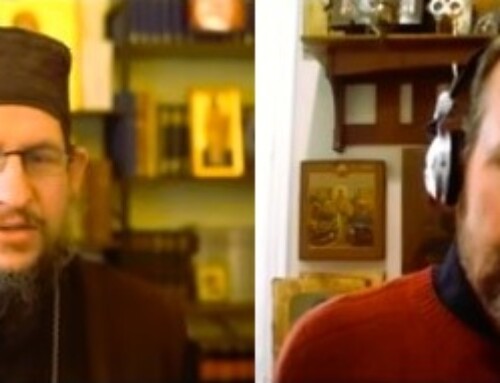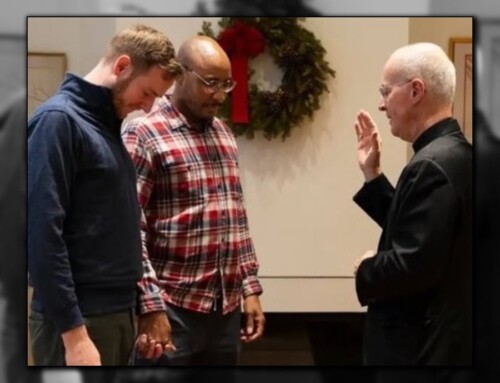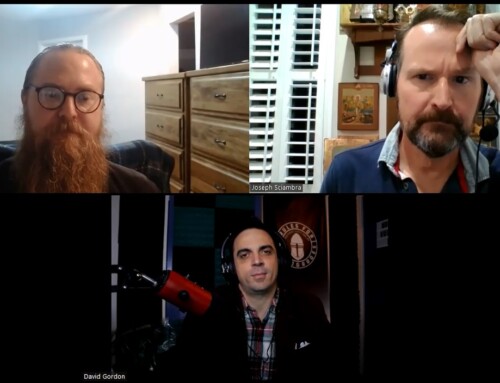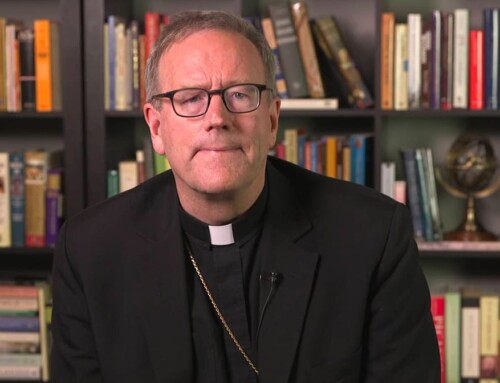Father Thomas Rosica, the Vatican spokesman for the Synod, has stated publicly with regard to homosexuality at a press conference:
“There must be an end to exclusionary language and a strong emphasis on embracing reality as it is. We should not be afraid of new and complex situations…The language of inclusion must be our language, always considering pastoral and canonical possibilities and solutions.”
Archbishop Mark Coleridge of Brisbane said
“[We need] a new way of speaking about the situation of those who are same-sex attracted or in a same-sex partnership of some kind…There’s very strong support for a less condemnatory approach, and language is at the heart of that. There’s a desire to include [people], without taking on board the claims of what’s sometimes called ‘gay ideology.’”
“That may involve not just words, but also the language of gestures, of which the pope himself is such a master.”
…here’s Archbishop Charles Chaput on using the phrase “intrinsically disordered” to talk about gays and lesbians:
“I think it’s probably good for the Church to put that on the shelf for a while, until we get over the negativity related to it,” he said. “That language automatically sets people off and probably isn’t useful anymore.”
From an article published in “Psychiatric Times” (10/21/10) written by Shelly K. Schwartz:
“If there’s one thing sacred in the doctor-patient relationship, it’s trust. Open and honest dialogue on both sides of the exam table is by all accounts critical to effective care. Patients have to be truthful to ensure diagnostic accuracy and an appropriate treatment plan, while doctors need to provide full disclosure about their patient’s health — the good and the bad— to help patients make informed decisions. Indeed, patient autonomy is the cornerstone of modern medicine and patient-centered care.”
Our Lord Jesus Christ said: “They that are well have no need of a physician, but they that are sick. For I came not to call the just, but sinners.” And “gay” men and women are truly “sick,” for they are ill in mind, body, and soul: according to numerous studies, those with same-sex attraction have much higher rates of mental illness than heterosexuals; with one study finding that as high as 43% of homosexual and bisexual men and women have a mental disorder.1 In addition, “…46% of homosexual men and 22% of homosexual women reported having been molested by a person of the same gender. This contrasts to only 7% of heterosexual men and 1% of heterosexual women reporting having been molested by a person of the same gender.”2 Most horrifying is the fact that “gay” men are 140X more likely to contract HIV than heterosexual men; in comparison, according to the American Cancer Society, men who smoke are “only” 23X more likely to contract lung cancer than non-smokers.3 Lastly: “When it comes to religion, the LGBT population has a distinctly different profile than the general public. Fewer LGBT adults have a religious affiliation. About half of LGBT respondents describe themselves as atheist, agnostic or having no particular religion…”4 In addition, the vilest forms of pornographic blasphemy are rather pedestrian and routine in the homosexual world: from the “gay” Jesus play “Corpus Christi” to the annual Easter “Hunky Jesus” contest in San Francisco; even after contracting the incurable HIV virus, gay men largely reject Christianity and describe “…more individualistic or ‘New Age approaches’” to religion.5
It’s clearly evident that “gay” men and women are in serious need of help; many, beyond having been sexually abused as children, suffering from mental illnesses, and then, having to deal with contracting an incurable disease, have repeatedly failed to understand just how self-destructive and “sick” their lives have become. This is largely because, tragically, in the “gay” world – they never hear the truth; for, “coming out” breeds a sort of collective “gay” euphoria of denial: denying that they were hurt and unloved as children, that they were violently assaulted, and that they have routinely been re-victimized by other homosexuals. As a result, “gay” men and women are dying without ever knowing that they had an option; from the Catholic Church, they deserve to know the Truth; they deserve “full disclosure.” Because, if we are desperate enough to even consider the Catholic Church, believe me, we have already walked up and down the halls of hell a thousand times over; and, something comparably harmless – like the term “intrinsically disordered” is not going to shock or upset us in any way. But, now, some want to get rid of it; I suppose they think we can’t cope with the reality of our own diagnosis; or, also likely, is that some in the Church have been heavily influenced by a cabal of “gay Catholics” who incomprehensibly want to cling to their illness; it’s as if they cannot escape from a weird sort of variation on the Munchausen syndrome in which the patient and the illness become hopelessly intertwined. In his recent interview, according to Chaput: “He said he doesn’t know what the appropriate substitute would be, but is open to finding one.” We do not need to be protected, we are not a special case, and we are not “gay;” we are simply among the duped and deceived, the sacrificed and the slaughtered upon the altar of this evil “gay” lie. However, what we are is “sick” and we need to be healed – we are looking towards the Church; in our lives as “gay” men and women, we had enough family members and “friends” who supported us, coddled us, and enabled our delusions; oftentimes, these unwitting accomplices remained silent or complicit because they were frightened – of us; we don’t need any more of those.
1. See: https://josephsciambra.com/2015/08/7-facts-about-gay-lifestyle-they-dont.html;
and: https://josephsciambra.com/2015/08/band-aids-on-bullet-wounds-where-faith.html;
and “Rates and predictors of mental illness in gay men, lesbians and bisexual men and women: Results from a survey based in England and Wales.”
Warner J. et al.
Br J Psychiatry. 2004 Dec;185:479-85.
2. “Comparative Data of Childhood and Adolescence Molestation in Heterosexual and Homosexual Persons.”
Marie, E. Tomeo, et al.
Archives of Sexual Behavior 30 (2001): 539.
3. “Men Who Have Sex With Men Have a 140-Fold Higher Risk for Newly Diagnosed HIV and Syphilis Compared With Heterosexual Men in New York City.”
Preeti Pathela, DrPH, MPH, et al.
J Acquir Immune Defic Syndr 2011;58:408–416
4. Pew Research Center
June 13, 2013
“A Survey of LGBT Americans: Attitudes, Experiences and Values in Changing Times”
5. “Like a prayer: the role of spirituality and religion for people living with HIV in the UK.”
Ridge D, et al.
Sociol Health Illn. 2008 Apr;30(3):413-28.





